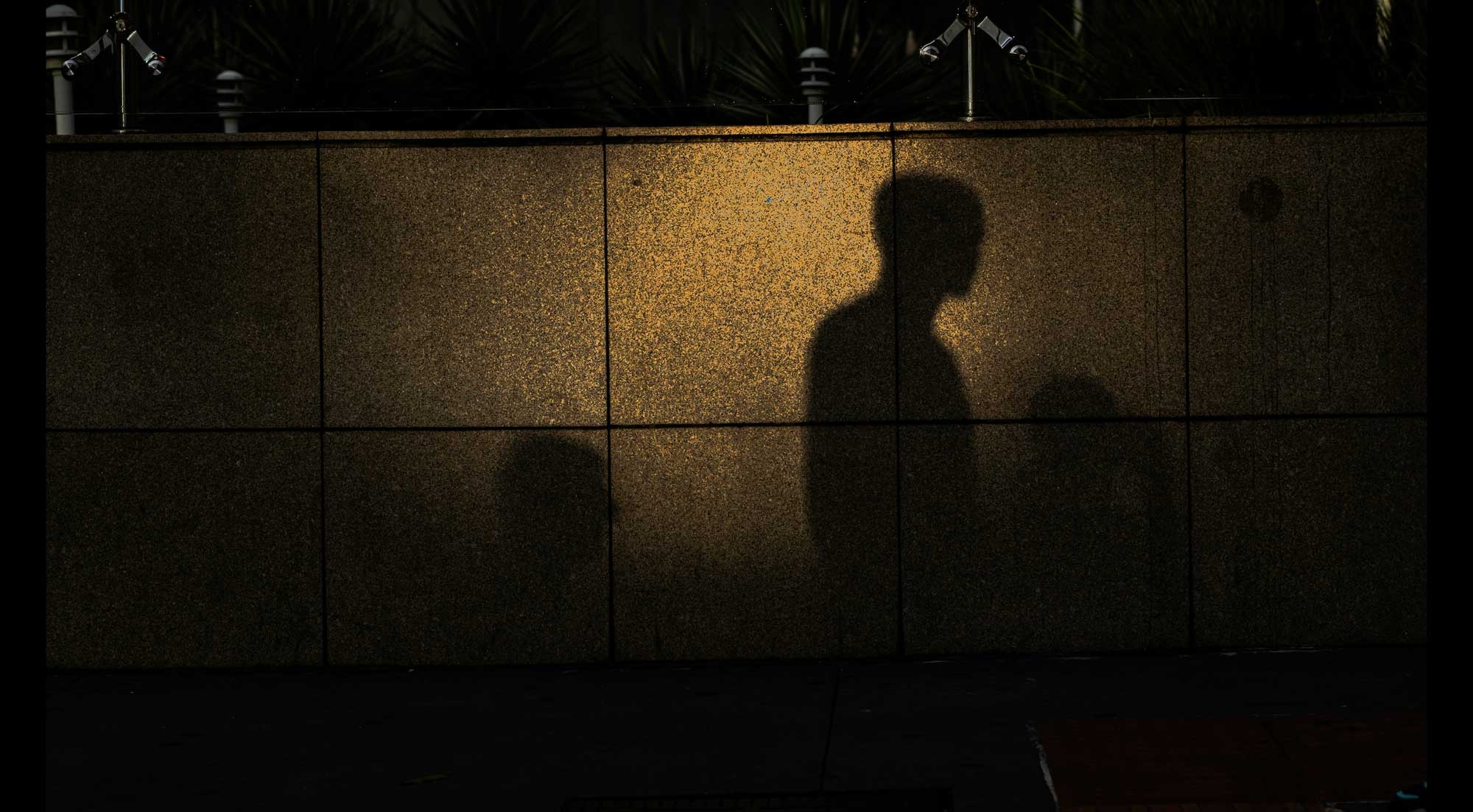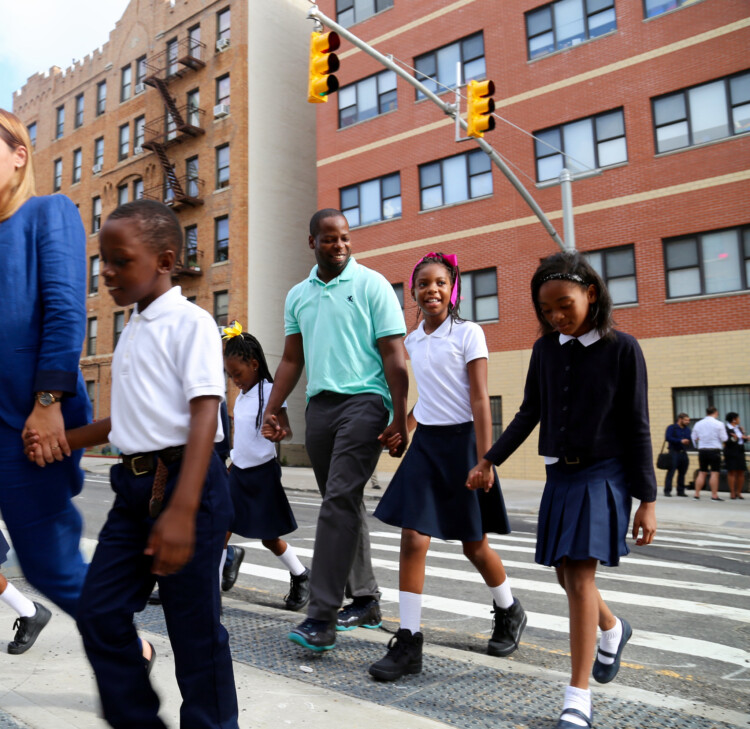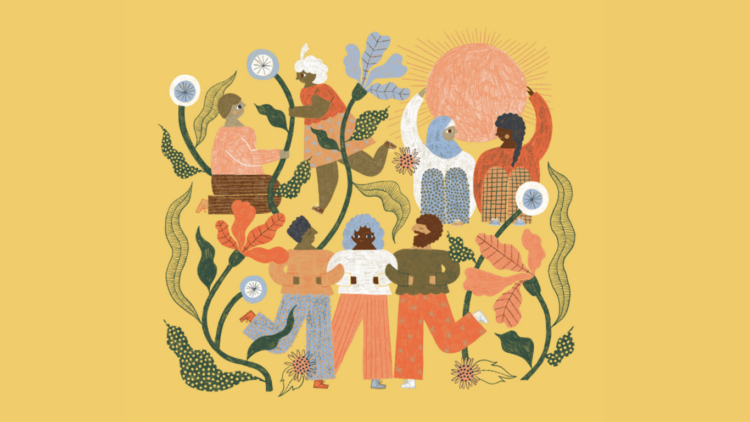“People should not come out of [Rikers] more harmed than they were when they went in,” Bruce Western, a professor of sociology at Columbia University and the incoming president of the Russell Sage Foundation, said in a recent conversation with the Foundation. Citing a persistent culture of violence, physical isolation, and inaccessibility, an independent commission in 2017 called for closing New York City’s Rikers Island jail. Under former Mayor Bill de Blasio, the city committed to closing the jail by 2027, an important step in reimagining the city’s criminal justice system.
Recent findings from a Foundation-supported study by Western and colleagues at the Columbia Justice Lab illuminate the profound effects the jails have on the lives of those who pass through them—and the role social policy can play in mitigating that harm.
Between 2019 and 2021, the Rikers Island Longitudinal Study (RILS) followed nearly 300 people facing criminal charges in New York City to understand how their social and economic conditions have impacted their pretrial experiences. The study’s participants were demographically similar to the city’s general population of arrested adults and comprised two groups: those who had been frequently incarcerated, and those with violent felony offenses. The team administered periodic surveys aimed at capturing participants’ life histories, including their childhood experiences, physical and mental health, substance abuse, and lifetime criminal legal system contact.
A new report from the RILS team offers a stark account of the ways criminal court involvement can compound the already precarious conditions of those awaiting trial at Rikers and in the community, as well as those whose charges were dismissed. Many of the study’s participants reported experiencing severe housing insecurity in the period prior to their arrest, which held strong links with unemployment, substance abuse, mental health issues, and exposure to violence. These challenges were further exacerbated once participants left the jails. Emerging adults aged 18-25, who are more than twice as likely to be incarcerated as the whole adult population, are particularly vulnerable when it comes to unemployment and health insurance.
The Rikers Island Longitudinal Study followed nearly 300 people facing criminal charges in New York City to understand how their social and economic conditions have impacted their pretrial experiences
The team worked closely with the Mayor’s Office of Criminal Justice (MOCJ) to design the study, with its findings holding the potential to play a critical role in informing the city’s plans to close the jails on Rikers Island. Such partnerships exemplify the role research might play in advancing policies that can help reduce inequality among some of the city’s most vulnerable residents. Research funded by the Foundation demonstrates that findings developed through partnerships have a greater chance of getting used to inform policy and practice.
The Foundation spoke to Western and his colleagues Samantha Plummer and Jaclyn Davis about the study’s evolution, the collaboration with MOCJ, and future policy implications. This interview has been edited and condensed for clarity.
How did the study come about?
Samantha Plummer: The project really came out of a partnership with the Mayor’s Office of Criminal Justice as the city finalized the plan for closing Rikers. The principal research question that MOCJ had was, how can that be done safely? How can decarceration happen? What kind of supports would people need in the community to meet their court obligations and also reduce contact with the with the criminal legal system?
Bruce Western: In the policy conversation around closing the jail, there has been a lot of focus on the legal process, what happens in the courtroom, conditions of confinement in the jail. It’s a very system-focused policy conversation. Our interest, and I think part of MOCJ’s interest too, is how people who were going through that process were doing, what their life conditions were like, and what were the problems that they were contending with that, in in many cases, brought them into the system in the first place. I feel that we’re able to fill a little bit of the gap in the policy conversation, because instead of being system-focused, we were being people-focused.
The partnership with MOCJ is a unique feature of the project. How did that relationship emerge, and how has it evolved over the course of the study?
BW: Our chief point of contact over there—and this was back during the de Blasio administration—was Liz Glazer, who was running MOCJ at the time. She really had a vision of criminal justice policy being one component of well-functioning city life, and that was her real concern. What set of policy conditions can help make cities thrive? She was open, I think, to a much broader perspective on what closing the jail meant. There are a lot of people with a lot of needs and challenges who would be in community settings that are normally locked away and managed through incarceration. So I think there’s a very large vision behind the project of closing Rikers Island jail.
In the policy conversation around closing the jail, there has been a lot of focus on the legal process. …It’s a very system-focused policy conversation. Our interest…is how people who were going through that process were doing
I had just come off a re-entry study in Boston and that was the lens I was going into this work with, that this was always for me as much about poverty and mental health problems and housing insecurity and untreated substance use disorders, as it was about crime. I think for Liz, that felt quite resonant.
In the research design phase, we were in conversation [with Glazer] a lot, and she was sharing a lot of data with us. [MOCJ] were very focused on VFOs—the violent felony group—and our research team was saying, “Well, what about people churning through the jail who are frequently incarcerated, not necessarily for violent crimes, but for other sorts of things?” And they were saying, “Yes, you’re right. That should be part of the design too.”
Jaclyn Davis: We continue to share our research findings with them. For example, we presented findings to MOCJ staff in the fall. Afterwards they let us know about a few specific initiatives that our research could speak to, and we sent them a follow-up memo with relevant findings from the survey.
Something that is somewhat unique about this study, and a lot of the work that we do at the Justice Lab, is that it is a bit more collaborative with policymakers. It’s not just we do a study, we write up the results, and then we put it out there. We really put an effort to say, “What is it that you’re working on, what are you interested in?” [We] try to tailor how we can speak to those questions that you have … and say, “Here’s what we’re finding.”
SP: A feature of the research team that makes it more collaborative or participatory is that we included at least four community researchers. These are people who had little to no social science research experience prior to joining the project, but had direct experience of incarceration. They were integral members of the research team … who were not only really essential to the data collection efforts of going out and doing all the interviews, but also thinking about how to phrase questions, what kinds of questions should be included. Also in their follow up questions, asking things that maybe wouldn’t have occurred to other members of the research team who didn’t have that experience. That’s another important component of the research that makes it a bit different than other research initiatives in this area.
A feature of the research team that makes it more collaborative or participatory is that we included at least four community researchers. …They were integral members of the research team
BW: We’ve very much internalized that thinking about the research team as a broad group of people and not just a bunch of university academics and students. It’s certainly outside of the usual mold of work of the university research center, at least in my experience. For me, it’s just been incredibly rewarding to work in that way. I’ve learned so much new stuff by leaning into what, from an academic point of view, are non-traditional kinds of relationships.
We’re trying to do research at a very high level and in a very rigorous way, and we’re trying to recognize that people have different kinds of expertise. It’s not just academic training and academic expertise, but the expertise of lived experience among formerly-incarcerated researchers is a real thing.
The study points to a number of approaches that hold potential to improve conditions for people going through court, from reducing processing delays to increasing housing supports. Are there any you find particularly promising?
JD: Something that we looked at in depth was the duration of court cases and who was having these extremely long case durations. It does seem like people who were detained pre-trial are spending very long times waiting for a court to make a decision, particularly those who were arrested for felonies. It just takes a lot longer. Given that the Rikers population is predominantly people that are awaiting trial, [we need to] try to get them out of the jails faster. One way to do that would be trying to speed up the court process.
MOCJ often works with local nonprofit organizations to organize transitional housing programs. During Covid-19, MOCJ launched an Emergency Reentry Hotel program for people being released from jail and prison alongside Exodus Transitional Community and Housing Works. They are continuing to grow their nonprofit network in this area, though many of these programs focus on post-release housing, rather than pre-trial housing.
SP: When we first sent the report around to various partners and funders, we had a Zoom call with [MOCJ] where we presented briefly some of the kind of key findings and what we thought a few of the implications might be. In addition to speedy trial and some of the housing implications, MOCJ has a few programs. They have transitional housing, so thinking about maybe expanding that to include supports for people who are in the pre-trial process, or a housing diversion program.
Another thing that they have is called Atlas. It is a program that is not court mandated, but offers referral services and outreach and interventions. One of the things that we were finding too is that a lot of the programming that people were [mandated to]—and part of this may have to do with the pandemic as well—was just net widening and not super helpful for them, from their perspective. It’s also punitive by definition because if they’re mandated there, then there are these punitive consequences that come with not going to that programming. So making that programming voluntary, based on our interviews and based on our data, I think will be much more successful.
One of the organizations that a respondent mentioned to me was the Ali Forney Center. Other programs that younger adults mentioned were mentoring programs that connected them with internships.
BW: New York City is making fairly broad use of social services for people moving through the criminal courts. Supervised release, for example, in contrast to pretrial probation in many jurisdictions, is heavily focused on the social service needs of people. Supervised release works with reentry programs, drug treatment programs, and housing programs to help people meet their court obligations.
The study notes that emerging adults are more vulnerable when it comes to incarceration. What particular challenges are this group facing?
SP: For me, two of the more surprising findings about the emerging adults were that they actually do seem to have a relatively high health burden, which is not something that typically occurs at least to me when I think of people who might be facing significant health challenges. It wouldn’t occur to me to think about people between 18 and 25. The emerging adults, at least in our sample, were facing significant health challenges, but were much less likely to be insured than people older than 25 in the sample. Also, the emerging adults that we recruited at Rikers, who were at that point in RNDC—which is where most of the young adults were being sent—have really high levels of exposure to violence. They were being charged with violent felony offenses, but that also was correlated with exposure, both with victimization and with witnessing violence.
In terms of outreach for people coming back, having some kind of stable housing that they can go to would be a great direction to move in
On the other hand, I would say that certain emerging adults benefited from having more family support than older adults in the sample. One of the things we’ve been talking about is these transition times, both out of childhood into emerging adulthood, and then also out of emerging adulthood into more stable adulthood, as being really challenging. I think this is where policymakers might focus more of their attention.
What role do familial and community support play for incarcerated emerging adults, both prior to incarceration and during re-entry?
JD: Housing was definitely a major theme. That’s true with both younger and older respondents, that having stable housing was extremely important for a series of outcomes, and that having unstable housing seemed to further destabilize going through this court process. People that were living in unstable housing were more likely to report that being involved in court made them lose their housing. They were more likely to be convicted of a crime. In terms of outreach for people coming back, having some kind of stable housing that they can go to would be a great direction to move in.
BW: It’s kind of this bifurcated conversation between criminal justice intervention or social policy intervention, and it’s all pretty much focused on the person going through the system. What programs could support them? Or how can court processing be tweaked so people can better meet their court obligations? I think one of the implications, and we saw it in the data, particularly with young people, was they’re embedded in this whole sort of family network, or household network, that’s providing housing a lot of the time, providing financial support and a lot of social and emotional support as well. That supportive network of the household and the family is not really seen as a potential group who could and should be supported if we’re trying to help people move effectively through the court process.
I think the data does point to the importance of trying to support families and households, particularly family heads, who are really doing a lot of the heavy lifting. These are often older women who themselves are facing socioeconomic challenges as well, and now they have a son or a grandson who’s moving through the court system and that’s putting added stress on their family network. So what would policy supporting those older women who are doing the caring work for their sons and grandsons look like?
The court system, or the criminal justice system more broadly, is contributing to deepening inequalities, even within this uniformly vulnerable and precarious population
Something else that we talk about a lot is the importance of households and the way households can support people. I think a lot of the housing conversation can be focused on institutional sources of support, like supportive housing programs and so on. But institutional housing programs can’t support people in the way that private households do. Of course, households can also be sites of risk and danger but they’re able to care for people in a highly individualized way. Supporting private households and the heads of those private households, I think, is an important implication of the research, whether that’s tax credits or direct services or additional income supports.
What future research questions or policy recommendations arise from the study?
SP: Jackie and I have been working on this paper looking at what the effects of being arrested and criminally processed are on people’s social and economic life conditions. What we found is that it’s incredibly disruptive, pretty much across the board, but particularly so for people who are already in more vulnerable and more precarious conditions to begin with. The court system, or the criminal justice system more broadly, is contributing to deepening inequalities, even within this uniformly vulnerable and precarious population.
One of the implications there is, how do we reduce contact with the system, period? It’s a research question, and one with really important policy implications. There are initiatives in in the city, and also other cities in the United States, to think about other first responders, diversion, even from arrest. Just going through the process itself can be really disruptive. You lose your job, you lose your housing. You lose your housing, then it’s really difficult to get a job. These cascading effects end up being a vicious cycle for people, and it persists even past a disposition or a dismissal in the case. So the question for me coming out of that is: What are effective ways to reduce the footprint of the system because of its effects on increasing inequality?
JD: In addition to lowering system contact, I think the study speaks to something that’s relatively new, which are these disruptive effects of just going through a court process and the fact that that is a vehicle for increasing inequality. [We’re] trying to understand how that’s happening, and also who is most vulnerable to those negative effects. How is the court affecting them in a disproportionate way? These are still research questions that I think we could dig into a lot more in order to understand what are the policies that we should be adapting, or what are the social services that we should be investing in most and for whom.
BW: What the system is touted to do—and it often doesn’t operate this way in practice—is to respond to serious interpersonal harm in communities. When a crime is committed, there’s been some break with community norms and relationships, and someone’s been arrested and is going through a court process and may get sentenced and punished. We think about the response to that problem—of interpersonal harm in communities—as punishment, but in practice, the system fails in many ways because punishment itself can be harmful. A lot of non-serious stuff gets swept up into the system and people who haven’t perpetrated serious harm against other people are going through the system as much because of where they live and the personal challenges that they’re facing and so on. The system is a very blunt instrument and can’t distinguish very well between people who have intentionally caused serious harm and people who are just disorderly and disruptive.
I think a paradigm shift is to move from punishment to what would be a much more socially integrative response. How do we repair the relationships that hold together urban communities? How do we repair those relationships in a way that brings people back into the community rather than casting them out? That same perspective should serve people who have been victimized by crime as well. The system has failed to meet the needs of victims.
I think a paradigm shift is to move from punishment to what would be a much more socially integrative response. How do we repair the relationships that hold together urban communities?
On the policy level, the system has to work fast, and it doesn’t work fast at the moment. Victims often need help very rapidly. The object of repair should be front and center, and that means directly attending to the needs of victims. When someone is going through a court process and they’re going to be sentenced, a clear objective of that sentencing should be to figure out what role is this person going to play in our community after their sentence is completed. The sentence is not the end of the response to community harm, but what we should be thinking about is the productive role that that person is going to play in the community afterwards. That means thinking about, how long should this sentence be? What should the conditions of confinement look like? What should the programming during incarceration look like? What will a re-entry plan look like? The whole response should be reparative.
My own view is that there is a role for punishment in such a system, but it is one piece of a larger process of community repair and relationship repair. Punishment reconceived in that context has nothing like a life without parole sentence, or long periods of incarceration. Conditions inside prisons would look very different. People should not come out of prison more harmed than they were when they went in. That’s at odds with the principle of social integration. At a 30,000 foot level, this is where the data are pointing us.







